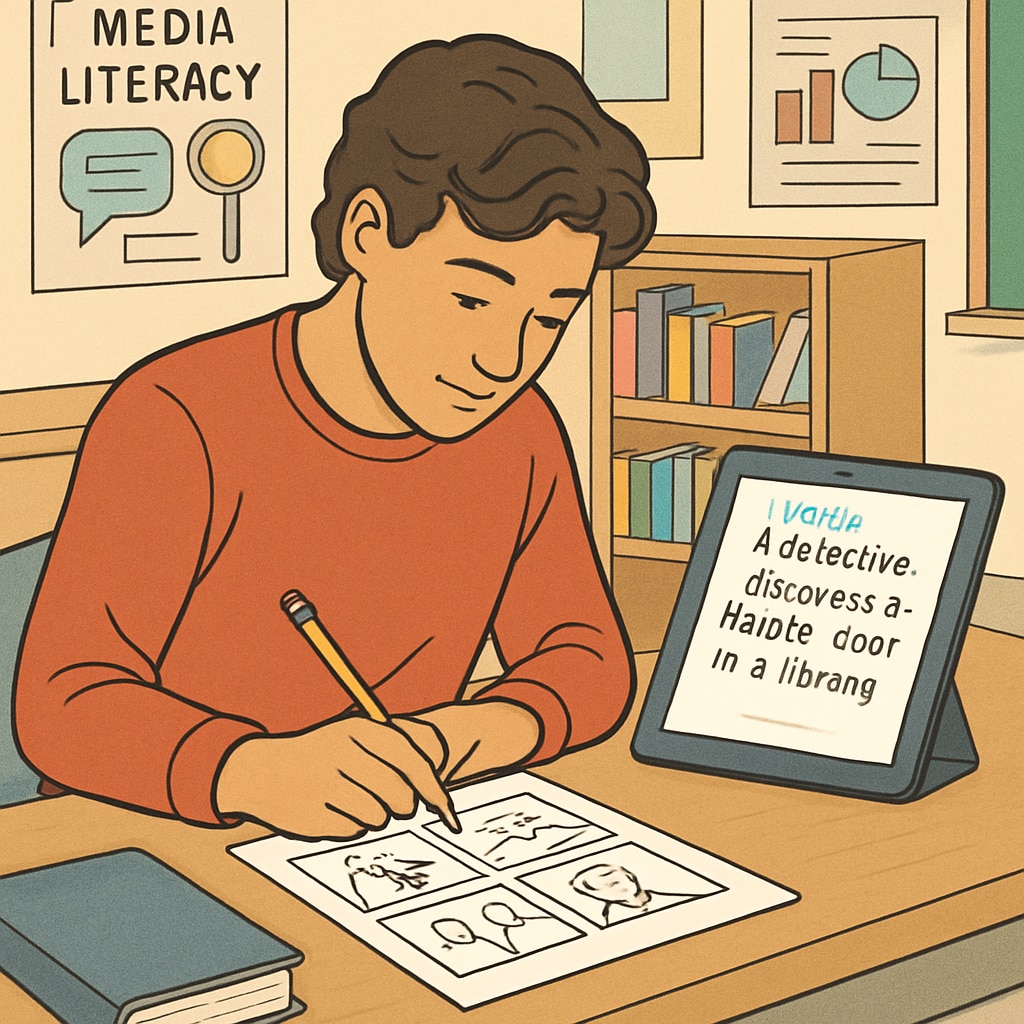The rapid rise of artificial intelligence (AI) has brought significant changes to education, particularly in teaching media literacy. With tools like ChatGPT, educators can now leverage AI writing prompts, media literacy, and educational resources to equip high school students with essential skills for navigating the digital world. This article introduces a resource package aimed at students in grades 9-12, designed to foster critical thinking, enhance visual storytelling, and encourage creative expression through AI-assisted learning.
How AI Enhances Media Literacy for High School Students
In today’s digital landscape, the ability to critically analyze media is more important than ever. AI-powered tools like ChatGPT enable students to explore the nuances of visual narratives, understand the motivations behind media creation, and question its impact on society. For example, AI can generate tailored writing prompts that encourage students to evaluate advertisements, dissect news articles, or analyze the cinematography of a film scene.
Furthermore, AI provides an interactive learning experience that adapts to individual students’ needs. By offering diverse perspectives and instant feedback, these tools can deepen students’ understanding of media literacy concepts. Teachers can also use AI to create personalized lesson plans, making complex topics more accessible and engaging.

Nurturing Creativity and Storytelling Through AI Writing Prompts
Visual storytelling is a crucial component of media literacy, enabling students to interpret and create compelling narratives. AI can assist by generating prompts that challenge students to think creatively. For instance, students might be asked to rewrite the ending of a movie, design a storyboard for a short film, or craft a persuasive campaign for a social issue.
These writing prompts not only hone creative thinking but also encourage collaboration. Group activities, such as brainstorming ideas for a documentary or analyzing the cultural context of a film, can be facilitated with AI tools. As a result, students develop a deeper appreciation for storytelling and its power to influence opinions and emotions.

Practical Applications for Teachers and Schools
Integrating AI-based educational resources into classrooms requires strategic planning but offers immense benefits. Teachers can use AI to streamline lesson preparation, automate grading, and provide individualized support to students struggling with media literacy concepts. Additionally, schools can collaborate with tech providers to access high-quality AI programs tailored to educational needs.
- Interactive Assignments: Use AI prompts to create engaging tasks, such as analyzing social media trends or drafting a screenplay.
- Professional Development: Offer workshops to help teachers understand how to maximize AI tools for media literacy education.
- Student Competitions: Encourage participation in contests that showcase media literacy projects, such as short films or digital campaigns.
By embracing AI in education, schools can transform media literacy from a theoretical subject into a practical, dynamic skill set. This prepares students not only for academic success but also for responsible media consumption in their daily lives.
Preparing Students for the Digital Age
The ultimate goal of these AI-driven resources is to empower students to become informed and critical media consumers. As the digital age continues to evolve, the ability to interpret and create media responsibly is a skill that will benefit students in all aspects of life, from academic pursuits to career opportunities.
In addition to fostering critical thinking, media literacy education promotes ethical considerations. AI tools can help students navigate issues such as copyright, misinformation, and digital privacy. By integrating these discussions into the curriculum, educators can ensure students are equipped to make informed decisions in an increasingly complex media landscape.
Explore more about media literacy on Wikipedia and learn its importance on Britannica.
Readability guidance: This article uses short paragraphs, lists, and clear transitions to ensure readability. AI writing prompts are emphasized as tools for fostering creativity, critical thinking, and collaboration among students.


